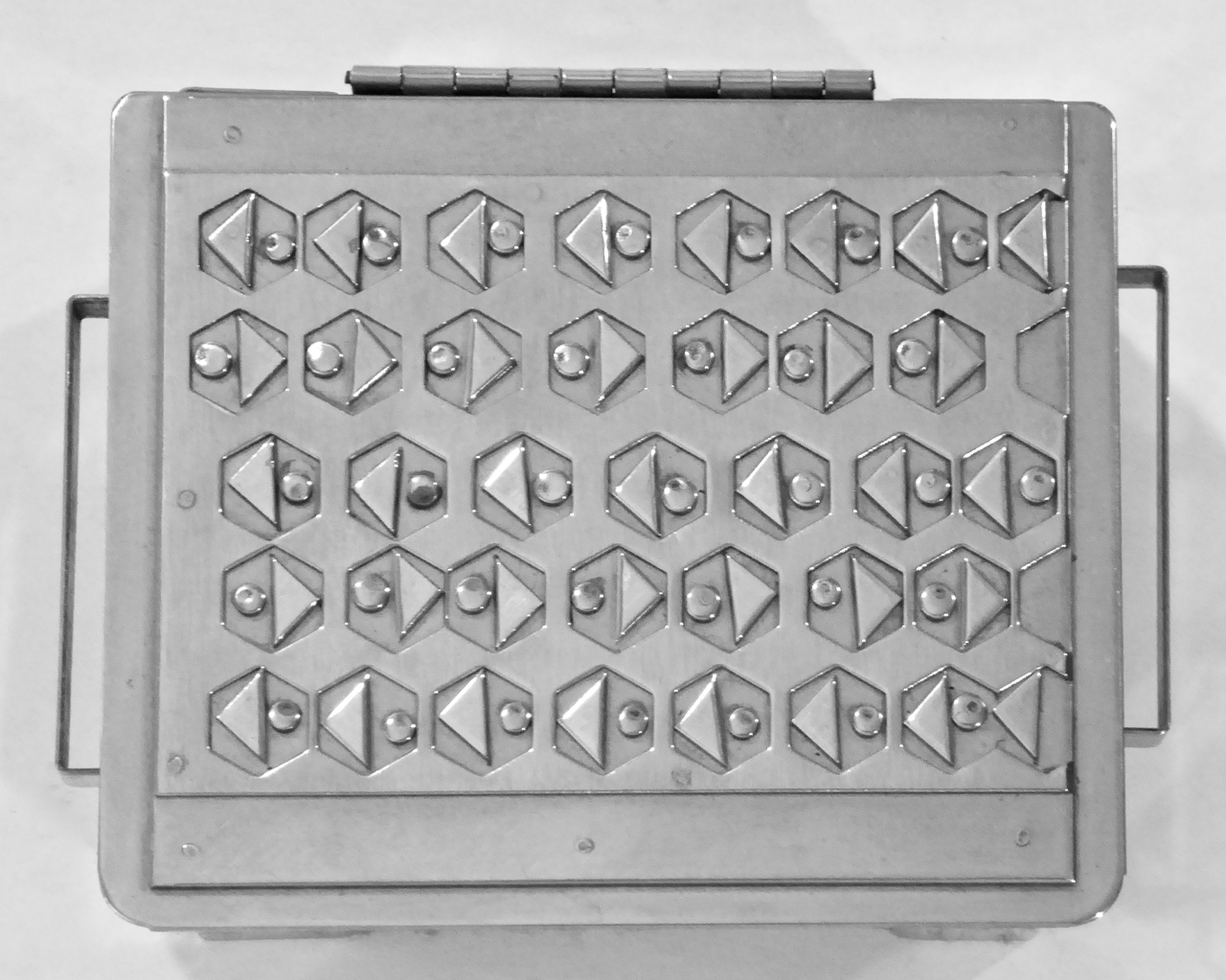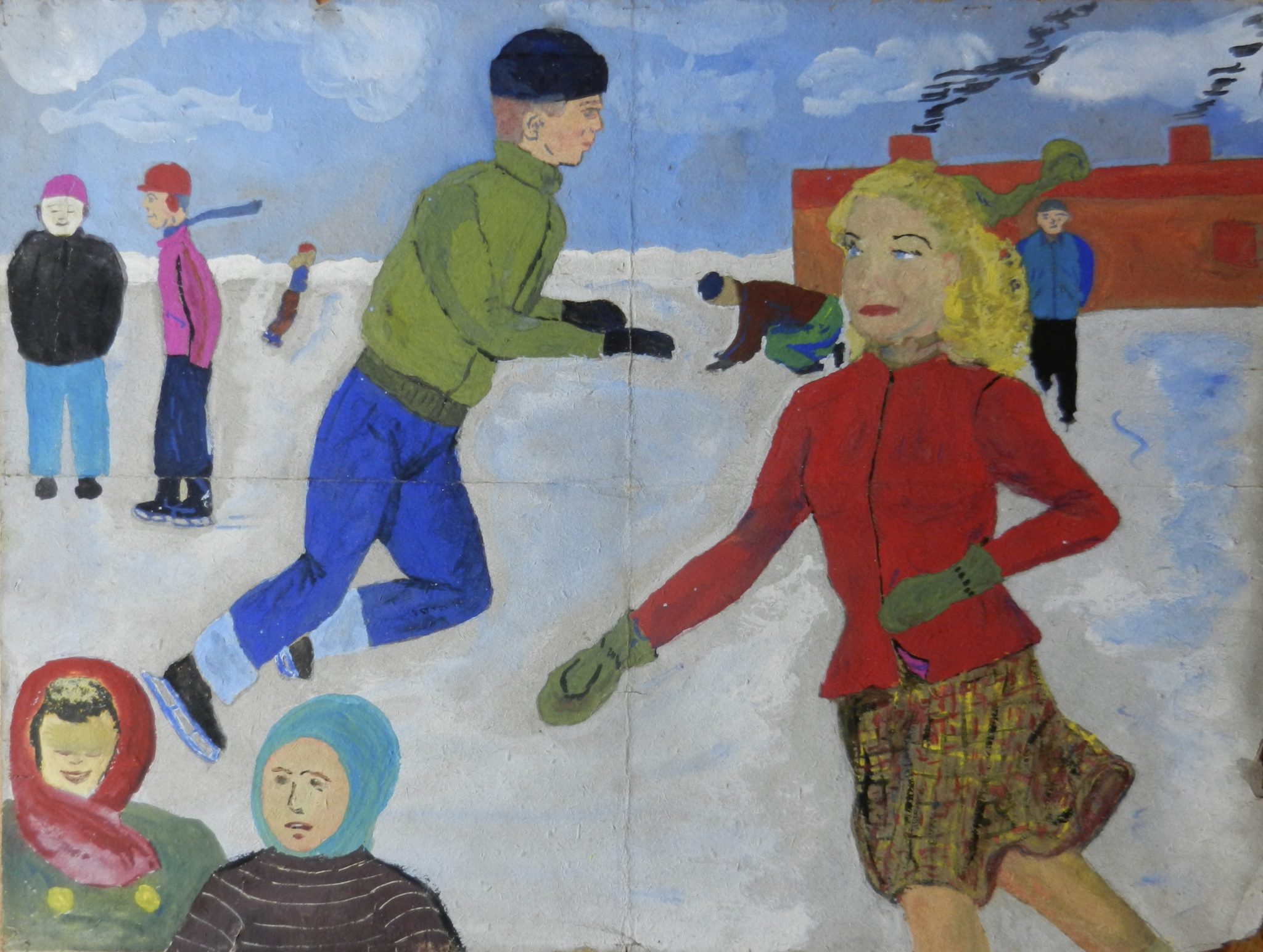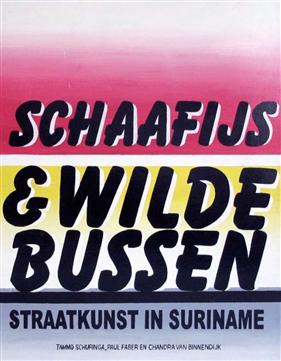The vibrant visual environment created by food trucks on the National Mall in Washington, D.C., is a longtime favorite at Interesting Ideas. These photos of this vernacular art experience are from our third session there, in August 2015. You can also see some glorious details at Food Truck Visions: Art of Street Food, D.C. . See our existing National Mall food truck gallery.
Continue readingCategory: Vernacular Art

The Stanley Szwarc Boxes
Stanley Szwarc (1928-2011) was a prolific artist, and boxes were his most frequent creation. There are thousands of these floating around the Chicago area, ranging from tiny ones barely a couple of inches wide to bruisers that could take up the corner of a desk. In his basement were closets and trunks filled with layers of boxes stacked up and divided by sheets of cardboard. “No two alike,” he would always say. As with all his work, the ornamentation is brilliantly creative. Recently acquired early work Visit the Stanley Szwarc visionary cross gallery Visit the Stanley Szwarc portrait gallery View Stanley Szwarc’s vases Stanley
Continue readingShort Review: David Plowden’s A Handful of Dust: Disappearing America
David Plowden’s photos in A Handful of Dust: Disappearing America are marvelously evocative as always. His introductory text moves them to a dimension beyond ruin porn. Usually when you see pictures of rural decay you respond to that evocativeness and to the formal beauty of the scenes. Plowdwn connects you to the stories behind these mostly Midwestern images in the same way that he’s connected, by talking about what these places (and the people who once populated them) were like when he first photographed them years ago. There really is a narrative behind almost every ruined farmhouse or boarded-up store.
Continue reading
Stanley Szwarc’s Visionary Cross Purposes
Stanley Szwarc (1928-2011), a Polish book keeper turned metal worker and then artist after arriving in the United States, gave no indication of being particularly religious, but he did like making crosses. A prolific creator of objects from scrap stainless steel, always demonstrating over-the-top imagination, Szwarc made hundreds of crosses, if not thousands. He produced jewelry, he made crosses to be hung on the wall, and he crafted cruciform objects with no apparent use other than to be carriers of his endless combinations of geometric shapes. Szwarc liked to say that no two of his objects, be they crosses, vases, key fobs or boxes, were alike. The evidence plainly supports that contention while demonstrating a virtuosic artistic vision
Continue reading
Vernacular Art Spectacular, DuSable High School
This group of drawings turned up at Maxwell Street some years ago. With the possible exception of “Take your cross and follow me,” which is an earlier piece, they were executed by students of Ethel Nolan, an artist and art teacher at DuSable High School on Chicago’s South Side. I’m guessing she might have saved the best of her students’ work, as represented here. Super fine vernacular art.
Continue readingBook Review: Singular Spaces: From the Eccentric to the Extraordinary in Spanish Art Environments
Jo Farb Hernandez’s study of Spanish art environments is so epic that even a large-format volume of nearly 600 pages can’t get the job done, so a bonus CD adds thousands more thumbnail pictures and hundreds more pages of text. If creating a world-class art environment requires obsessive devotion, Hernandez is a match for the creators she studies. Her devotion demonstrates Spain is a match for the rest of the world, even if its environments have not received the same attention as the great sites in France or Wisconsin.
Continue readingThe Art of Street Food
The National Mall, which stretches from the Lincoln Memorial to the Capitol and features most of the Smithsonian museums, is lined with hot dog wagons and food trucks, at least in better times. When last I saw them many of these trucks were extravaganzas of hand-painted signs promoting colorful snacks and refreshments. I fear photographed images are overtaking the paintings, but that’s life on the roadside, and at least they remain exuberantly colorful. Here are images from this portable, spontaneous art environment, August 2009 and July 2014. Update The last gasp of hand-painted signs on the National Mall food trucks,
Continue readingOldenburg’s Mouse Museum and Offensive Abstraction
Claus Oldenburg’s Mouse Museum, now recreated at the Museum of Modern Art in New York, was hugely influential when I saw it at the Museum of Contemporary Art in Chicago in 1978. His collection of commercial tchotchkes (salt-and-pepper shakers, Plasticville train set buildings, robot toys, product packaging), shown with pieces of his own art and models for works in progress, validated my own nascent fascination with pop culture objects, proving that they were interesting in and of themselves. I was just starting to collect kitsch items, commercial paraphernalia, handicrafts — prosaic stuff that seemed to resonate with some kind of
Continue reading
Book Review: Shaved Ice and Wild Buses: Street Art in Suriname
Schaafijs en wilde bussen: Straatkunst in Suriname, by Chandra van Binnendijk , Paul Faber and Tammo Schuringa, KIT Publishers, 160 pages, 2010. ISBN 978-9-4602-2054-8. Dutch, soft cover, 19.50 euros
Continue readingBook Review: South African Township Barbershops and Salons
South African Township Barbershops and Salons, Simon Weller, Mark Batty Publisher, 128 pages, 2011. ISBN 978-1-935613-04-6. Hard cover $27.95 If African Signs, with its minimal text but rich collection of photographs, provides a window to African vernacular culture, South African Township Barbershops & Salons passes through that window to provide something of an inside tour. Simon Weller, a professional photographer, not only document numerous advertising signs but also spent time with the hair cutters and their customers as well as several sign painters. He aims not just to show the art but also the culture in which the art is
Continue reading